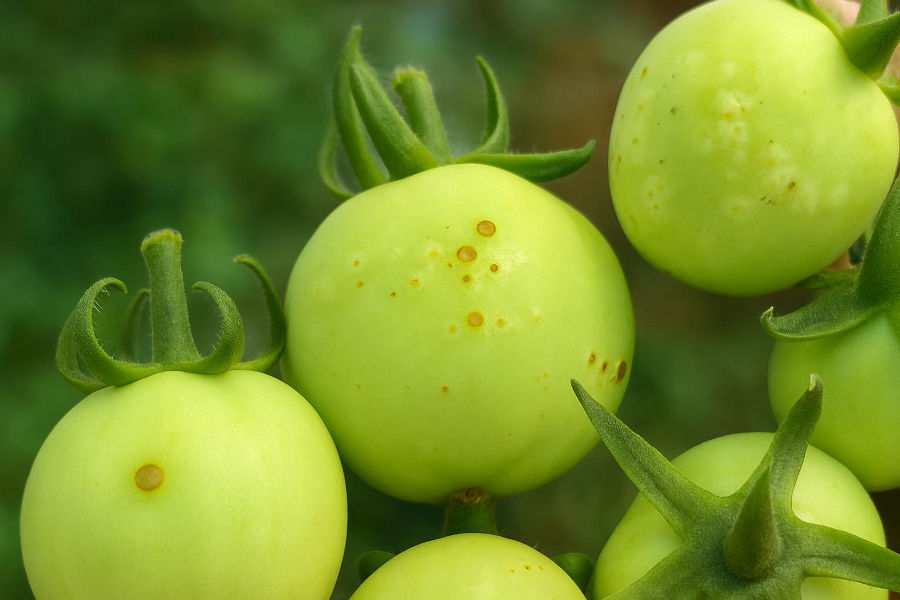Tomato Fruit Spots – Cause and Cure
While inspecting your tomato crop, you might come across green fruits with small, circular brown spots—just like in the image above. These blemishes are more than just cosmetic; they’re early signs of a bacterial or fungal infection and should not be ignored.
What Are These Spots?
These small, sunken, dark spots on green tomatoes are most commonly caused by:
-
Bacterial spot (Xanthomonas spp.)
-
Early blight (Alternaria spp.)
These pathogens thrive in warm, humid conditions and often start from infected leaves before spreading to the fruits.
How to Identify the Problem
-
Small, water-soaked lesions that later turn brown or black
-
Spots may have yellow halos around them (especially if bacterial)
-
As the disease progresses, spots can enlarge and dry up, causing the fruit to rot prematurely
-
Most noticeable during humid or rainy weather, especially if plants are overcrowded or remain wet for long periods
What Causes It?
-
High humidity and overhead irrigation
-
Poor air circulation in the plant canopy
-
Infected seeds or crop residues from the previous season
-
Splashing rain or water that spreads the pathogen
What You Can Do – Practical Solutions
1. Use Disease-Free Seeds or Seedlings
Always start with certified seeds and avoid using saved seeds from previously infected plants.
2. Follow a Strict Spray Schedule
Apply copper-based bactericides like Copper Oxychloride (COC) or Copper Hydroxide. Use Mancozeb or Azoxystrobin + Tebuconazole fungicide combinations in rotation to prevent resistance.
3. Improve Air Circulation
Prune lower leaves and avoid planting crops too close together. This helps reduce humidity around plants.
4. Avoid Overhead Watering
Switch to drip irrigation to keep the foliage dry and minimize disease spread.
5. Remove Infected Fruits and Leaves
Remove and destroy infected plant parts. Do not compost them, as it can spread the disease further.
